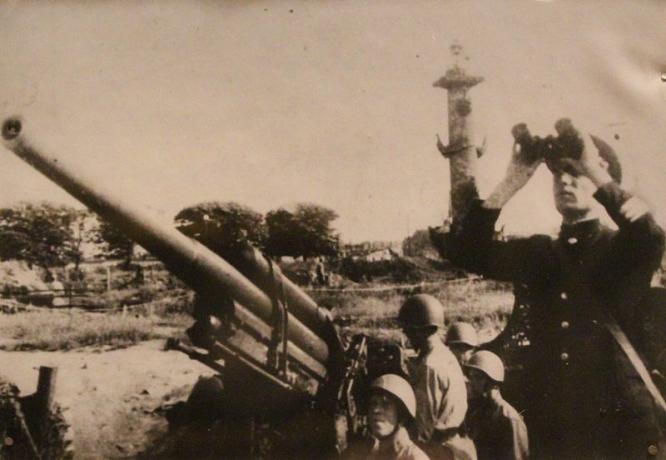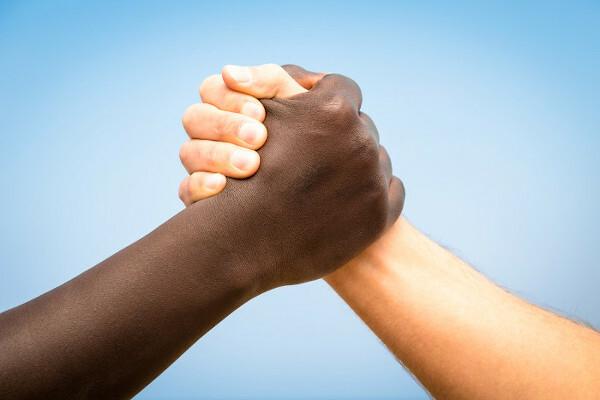The Second World War, which took place between the years 1939 and 1945, was the greatest conflict of the 20th century, with the largest number of victims in human history.
It is estimated that during the conflict 27 million soldiers and 25 million civilians died, including 6 million Jews.
The conflict was divided between the Allies and the Axis:
- allies: England, United States, Soviet Union and France.
- Axle: Germany, Italy and Japan.
The Axis countries won the initial battles of the conflict, then there was a balance of power between these groups, and finally the Allied countries win the war in 1945.
See below some of the most striking events of this conflict:
1 - Invasion of Poland by Germany (1939)
One of the main reasons for World War II was the expansionist desire of the German Empire. In 1938, Hitler had already annexed Austria and territories of then Czechoslovakia to his empire and Poland was his other target.
Anticipating a German invasion, Poland signed an agreement with France and England. Through this agreement, these countries undertook to give military support to Poland if Germany invaded their territory.
On September 1, 1939, German troops invaded Polish territory and began fighting. The Polish army was not well equipped and could not withstand the attacks, nor can it count on the support of France and England as provided for in the agreement.
The German victory in this invasion was due, above all, to its lightning war strategy, called Blitzkrieg, an innovative tactic that combined ground and air attacks. Two days after this invasion, England and France declared war on Germany and World War II officially begins.
 German troops on the march in Poland.
German troops on the march in Poland.
2 - Babi Yar Massacre (1941)
On September 29 and 30, 1941, a mass shooting for about 40 hours it would leave nearly 34,000 people dead in the city of Kiev, Ukraine, during the Nazi occupation of the city.
Kiev was known for its great jewish community and the name of the massacre refers to the place where the shooting was carried out, a ravine called Babi Yar.
This massacre was carried out by the Einsatzgruppen - a Nazi extermination group that acted against the Jews. Kiev had been under Nazi rule since September 19, 1941 and on the 24th some buildings used by the Nazi administration were attacked with bombs.
These had already been installed by the Soviet secret police before the German occupation, but regardless, the Nazis decided to take revenge on the action by executing the Jews.
They spread posters around the city urging Jews to attend the designated location with their documents and money. According to the posters, anyone who did not attend the site would be shot.
Believing that the Nazis would do nothing against the Jews and that the summons could be resettlement, 33,000 people attended the site.
Over the next 36 hours, these people were systematically shot and later their bodies were exhumed to leave no traces of the massacre.
3 - Siege of Leningrad (1941-1944)
The siege of Leningrad, a city in the Soviet Union, was an act of brutal violence by Nazi troops during World War II. Despite having signed a non-aggression pact in 1939, Germany and the Soviet Union were rivals and the possibility of conflict was almost inevitable.
Hitler's first attack (1889-1945) on the Soviet Union was the Operation Barbarossa, in 1941, when about 3.6 million German soldiers invaded the Soviet Union. The German army arrived very close to the capital Moscow, but the Soviets managed to drive them away.
The Germans then left for Leningrad. The Soviets believed that the German army would attack the city, but the strategy was different: the Nazis surrounded the city and let no one in or out.
The city was besieged for approximately 900 days. Gradually, access to food and water became difficult and the number of people dying of hunger or epidemics increased every day.
In the worst period of the siege, it is believed that around 20,000 people died a day. The population did everything to get food and cases of cannibalism were recorded.
 German troops during the siege of Leningrad.
German troops during the siege of Leningrad.
4 - Attack on the American naval base pearl harbor (1941)
Japan, since the 1930s, adopted an aggressive and imperialist posture of territorial expansion in Asia, especially in relation to China. Added to this posture, Japan and the United States, throughout the 20th century, already disputed some regions and their relationship became more tense.
On December 7, 1941, the Japan surprises the American naval base pearl harbor, located in Hawaii. The target was chosen because of Japan's territorial expansion interests in the Pacific Islands.
This attack caused around 2500 deaths, but the objective of the action - which was the complete destruction of the naval base - was not achieved. Many American ships were damaged, but the US shipping industry was able to recover the losses in a short time.
After this attack, the United States declared war on Japan, a conflict that would only end with the surrender of Japan after the attacks on Hiroshima and Nagasaki.
 Japanese attack on American naval base Pearl Harbor.
Japanese attack on American naval base Pearl Harbor.
5 - Battle of Stalingrad (1943)
The Battle of Stalingrad - one of the bloodiest conflicts of World War II - took place between Germany and the Soviet Union and extended from July 1942 to February 1943.
Stalingrad was a Soviet city where there was an important industrial park and a strategic oil passage. His invasion was part of Operation Barbarossa, which sought domination over the cities of Leningrad, Moscow and Stalingrad.
The attack on the city began with a bombing and then the invasion of troops by land. Hitler became obsessed with conquering this city and concentrated many resources in this battle.
The conflicts that took place in the city were extremely bloody, reports from the Soviets said that the situation was infernal and desperate.
The Soviets resisted because of the daily supply of soldiers, the support of the population in combat and Stalin's (1878-1953) express orders forbidding his soldiers to retreat. In addition, German troops found it difficult to adapt to the region's low temperatures.
Weakened and unable to face the Soviet offensive, in February 1943 the Germans surrendered.
 Soviet soldiers in Stalingrad.
Soviet soldiers in Stalingrad.
6 - Normandy Invasion (1944)
The invasion of Normandy, on the north coast of France, took place on June 6, 1944. Part of France was taken by the Germans and this invasion was made by the allied countries, with the intention of the German troops to retreat.
On that day, also known as Day D, about 1 million soldiers from allied countries entered French territory through the beaches of the Normandy region.
The victory of the Allies in this invasion was due to the surprise factor - the Germans imagined the invasion of the territory, but they were wrong about where this would happen. In addition, General Eisenhower (1890-1969) of the United States received intercepted information from the Nazis, which facilitated the attack.
This episode, along with the Battle of Stalingrad, was one of the milestones in the beginning of the victory of the allies in the world conflict.
 American soldiers landing in Normandy.
American soldiers landing in Normandy.
7 - Hiroshima and Nagasaki (1945)
On August 6, 1945, the United States played a atomic bomb about the city of Hiroshima - it was the first time that this type of weapon was used in human history.
The reason the United States dropped the atomic bomb on the Japanese city was in an attempt to force the country to surrender. Japan had refused to sign the Declaration of Potsdam, a document that defined Japan's terms of surrender.
Made of uranium, this bomb caused the immediate death of at least 70,000 people. After the first bomb was dropped, Japan refused to surrender, as it did not believe that the United States would have another atomic bomb.
With the refusal of surrender, on August 9, the United States dropped the second atomic bomb, now on the city of Nagasaki.
More powerful than the first bomb, it ended up causing less destruction due to the geographical conditions of the city. As it was made up of many hills and mountains, some parts were protected.
these attacks destroyed a large part of Japanese cities and caused priceless damage to life. In addition to the people who died at the time of the explosion and in the days that followed, the affected population had to deal with the consequences of the radiation for the rest of their lives.
After the second attack, the Emperor of Japan, Hirohito, declared the country's surrender and World War II was officially ended worldwide.

Also read the article about Second World War and see the Causes of World War II.


